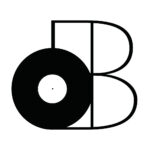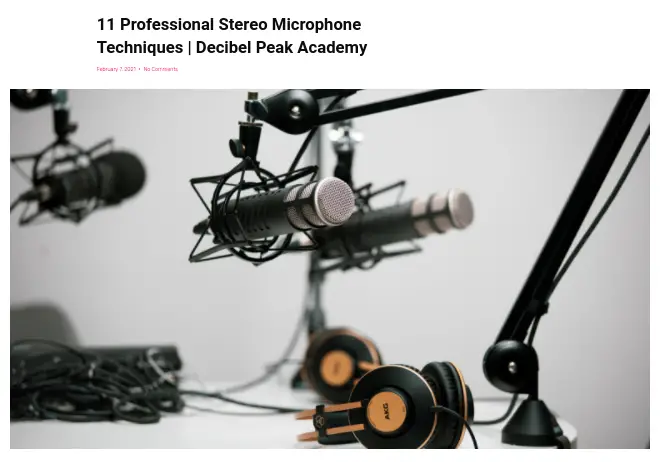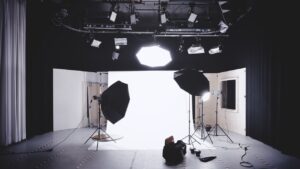Did you know that it only takes ONE microphone to record drums?
I know, it doesn’t seem like it’s possible but I’m telling you… Sometimes LESS is more.
Whether you want to know how to record drums on a budget or simply want to keep things simple, this article is for you. I’ll be sharing THREE different microphone configurations to record drums that’ll cost you less than 500$.
We’ll start with the most affordable and work our way up.
I’ll also be recommending the specific microphones I’d use to maximize the value while minimizing the cost. I hope you’re excited to get started!
- Recording Drums on a Budget #1 – 1x Omnidirectional Microphone
- Recording Drums on a Budget #2 – 2x Pencil Condenser Microphones
- Recording Drums on a Budget #3 – 2x Pencil Condenser + 2x Dynamic Microphones
- What about audio interfaces/mixing consoles?
- Summary: How To Record Drums on a Budget
Recording Drums on a Budget #1 – 1x Omnidirectional Microphone
Okay, so the secret to the one-microphone drum configuration is the TYPE of microphone.
It’ll also work great with a bi-directional microphone (i.e. a ribbon microphone), but there are a few reasons that drew me to the omnidirectional condenser microphone.
For starters, ribbon microphones usually roll-off some of the high-end.
It wouldn’t matter so much if we were using multiple microphones, but in this case we want a microphone with an EXTENDED frequency response (20 – 20,000 Hz).
The great thing about condenser microphones is that they usually cover the entire spectrum, but what’s even better (in this case) is how sensitive they are.
That’s especially important since we won’t be focusing on any particular drum.
In fact, here’s where you should place this microphone…
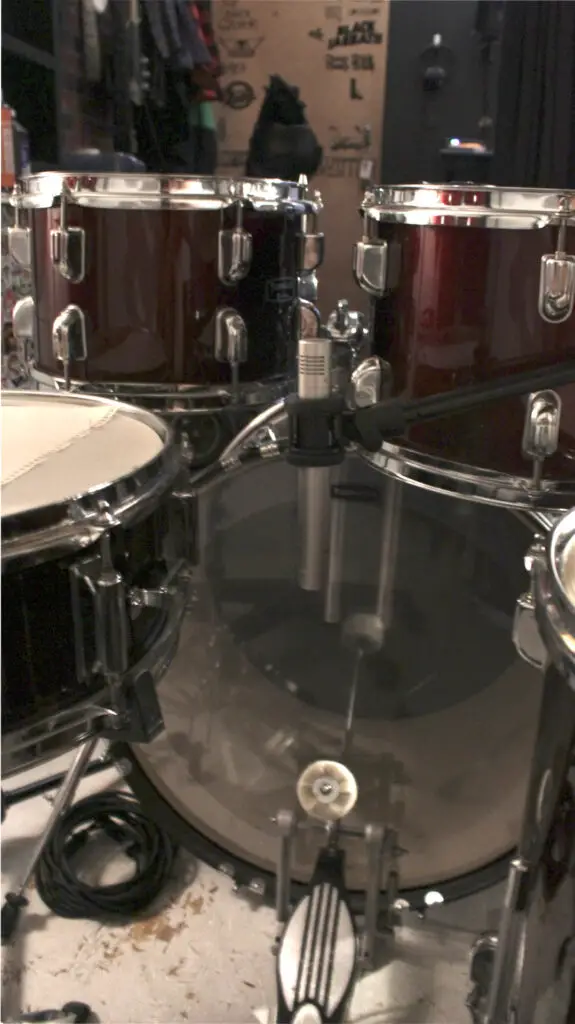
Right in the center of your kit (next to your snare drum).
However, we need to make the distinction between condenser microphones that are UNIDIRECTIONAL (cardioid) and OMNIDIRECTIONAL.
To create the illusion of stereo in mono, we absolutely need an omnidirectional microphone.
If you ask me though, you’re better off going with a multi-pattern condenser microphone that has all three (unidirectional, bi-directional and omnidirectional).
Here’s the one I personally recommend:
Recording Drums on a Budget #2 – 2x Pencil Condenser Microphones
When I record my actual drum kit (which is rare nowadays), I usually use TWO microphones.
It’s pretty common and depending on your microphone placement, you can actually get some great results on a budget.
The type of microphones you’ll need for this method are pencil condenser microphones.
They’re also referred to as small-diaphragm condenser microphones.
Now, if you want to know more about the different possibilities in regards to stereo microphone configurations, I highly recommend reading THIS article.
If you ask me though, the best configuration to use is the “recorder man”.
That’s how you’ll make it sound like you used WAY more than 2 microphones.
Essentially, the two microphones you’ll be using for this technique will be considered OVERHEAD microphones and the same is true for the “recorder man” configuration.
However, this technique is different…
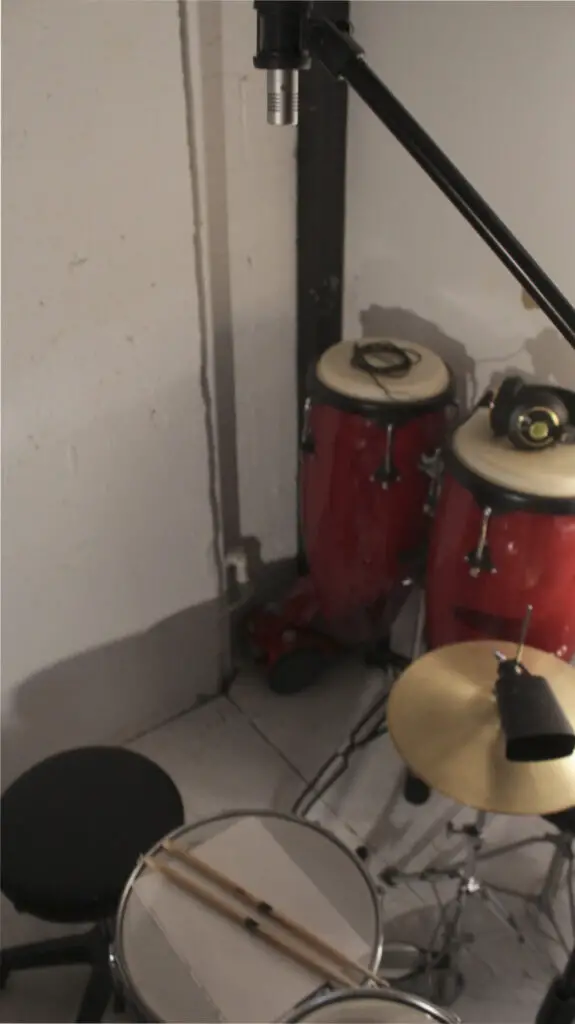
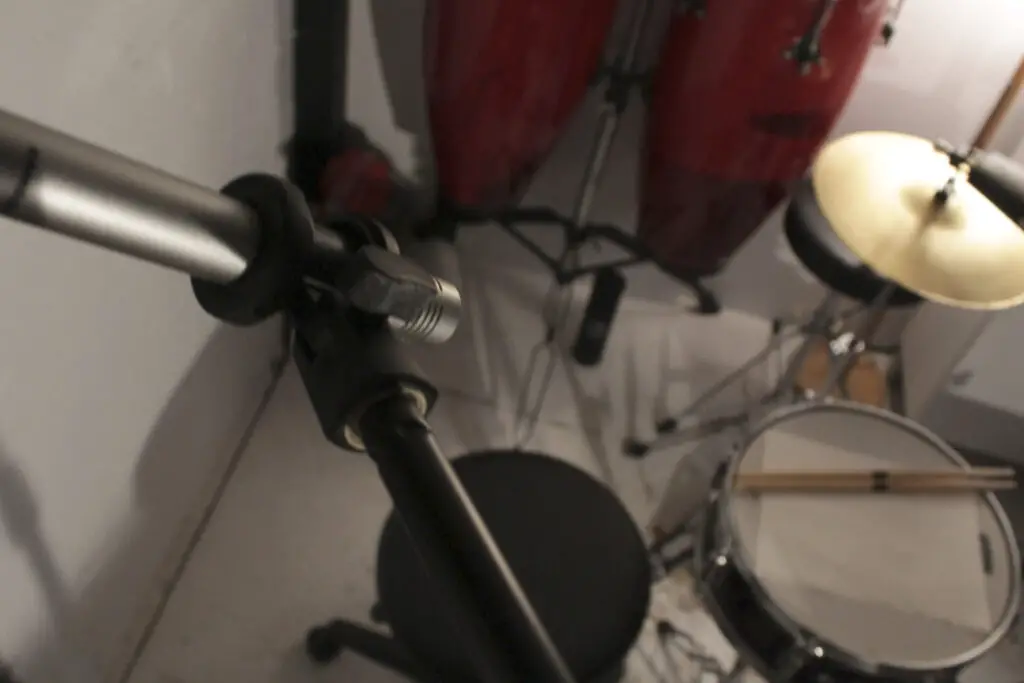
As you can see, the microphones aren’t placed conventionally…
- One of them is suspended right above the snare drum
- One of them is positioned over the right shoulder and pointing at the snare/kick
If you want more “thump” you simply point it more towards the kick drum. You also need to make sure that the microphones are the SAME distance from one another.
I usually work with 40-inches.
These are the microphones I recommend (the ones I should’ve bought):
Recording Drums on a Budget #3 – 2x Pencil Condenser + 2x Dynamic Microphones
Alright, the final “budget” drum microphone configuration builds on the previous one.
We’ll simply be adding one (or two) additional microphones to the mix.
The optional microphone is the one that’ll be focused exclusively on the snare drum. It’ll definitely add some detail, but I’d personally leave this one out.
The most important addition is the kick drum microphone.
The one disadvantage to recording drums with one or even two microphones is the absence of bottom-end. Of course, you can still work around this, BUT…
Adding a microphone JUST for the kick will definitely give you more PUNCH!!
Of course, some types of music NEED this and others might not.
For example, rock/metal drums have a dedicated kick drum microphone 99.9% of the time.
What about audio interfaces/mixing consoles?
The last thing you need to consider is the type of DAC you’ll be using.
Of course, you can find affordable options regardless of the amount of inputs you’ll be needing. It also depends on whether you’re planning on EXPANDING your setup at some point.
Maybe you’ve started with two microphones, but one day you end up using EIGHT!!
That’s why it’s important to put some thought into this now.
If you want the best affordable audio interface and you’ve chosen the one-microphone and/or two-microphone setup, I recommend the Steinberg UR22C.
You can read more about it HERE.
If you want the most affordable mixing console, I’d personally go with the Behringer Xenyx-series…
YES, you can use one of those as a USB audio interface as well.
It’s a great way to “future-proof” your recording studio without breaking the bank.
Summary: How To Record Drums on a Budget
Can you record drums on a budget?
Well, I hope this article not only demonstrates HOW to record drums on a budget, but that it might actually be MORE BENEFICIAL.
You can read THIS article if you want more information on that…
Of course, I always try to show you the best way to do things without breaking the bank, but I never do it at the expense of sound quality.
I just want to prove that you don’t need lots of money to produce high-quality recordings.
That’s somewhat of a myth…
BUT, I hope that you’ll spend what you need to spend to make this project a reality. If you want to record drums, then you owe to yourself to INVEST in that dream.
I hope my recommendations have helped you move the ball forward!
If you have any questions or would like some more personalized recommendations, feel free to reach out to me via the comment section. Thanks for reading, happy recording!!

